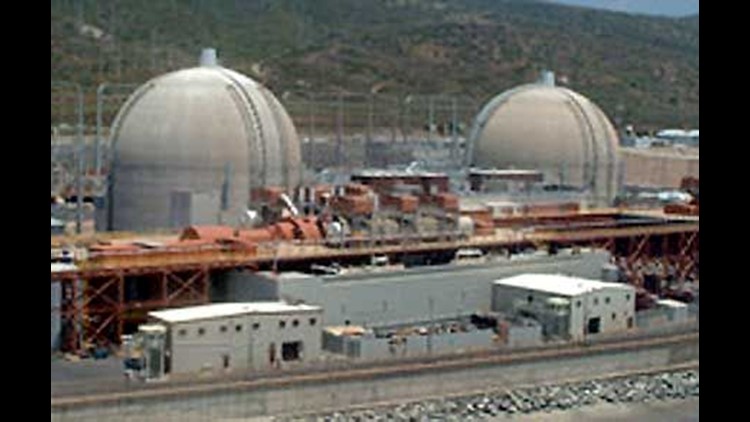LOS ANGELES (AP) — The idled San Onofre nuclear power plant is facing new scrutiny from Congress as the utility that operates it moves closer to proposing a fix to get the twin reactors back in service.
The chair of the U.S. Senate's environment committee pressed federal regulators Tuesday to disclose details about the design of the plant's troubled steam generators, in which hundreds of tubes that carry radioactive water have been damaged by unexpected vibration and friction.
Meanwhile, operator Southern California Edison said it was working toward meeting federal benchmarks that could open the way for a restart of at least one of the reactors, perhaps in time to meet summer power demand.
The twin reactors, located along the coast between San Diego and Los Angeles, have been shut down for more than three months while investigators try to determine the cause of the unusual tube wear.
On Tuesday, Sen. Barbara Boxer asked Nuclear Regulatory Commission Chairman Gregory Jaczko for documentation on how the federal agency reviewed a series of modifications to the generators, which might be the culprit in the mechanical trouble. Boxer, who chairs the Environment and Public Works Committee, sent a similar letter to SCE parent Edison International.
At issue is whether Edison sidestepped any federal requirements by conducting extensive design changes, a claim leveled by an environmental group that said the alterations are at the heart of the plant's problems.
"Concerns have been raised that design changes in the steam generators contributed to accelerated wear in tubes carrying radioactive water," wrote Boxer, D-Calif. "The determination to restart the San Onofre reactors must ensure the safety of the millions of Californians who live and work near the plant."
A 13-page report issued by Friends of the Earth, a group critical of the nuclear industry, warned that running the plant at reduced power would not resolve problems with badly worn tubing.
Earlier this month Edison announced a tentative plan to restart and run the seaside reactors at lower power, at least for several months, because engineers believe that will ease vibration that could be eroding tubes.
The four generators at San Onofre each have nearly 10,000 alloy tubes that carry radioactive water.
The generators function something like a car radiator, which controls heat in a vehicle's engine. The generator tubes circulate hot, radioactive water from the reactors, which heats a bath of non-radioactive water surrounding them. That makes steam, which is used to turn turbines to make electricity.
The tubes represent a critical safety barrier — if a tube breaks, there is the potential that radioactivity can escape into the atmosphere.
The Friends of the Earth report also expanded an earlier allegation that Edison misled federal regulators about the modifications, a claim disputed by the Nuclear Regulatory Commission and the company.
The trouble began to unfold in January, when the Unit 3 reactor was shut down as a precaution after a tube break. Traces of radiation escaped at the time, but officials said there was no danger to workers or neighbors. Unit 2 had been taken offline earlier that month for maintenance, but investigators later found unexpected wear on hundreds of tubes in both units.
The NRC has said there is no timetable to restart the reactors, which were replaced in 2009 and 2010 in a $670 million overhaul.
The report, written by Vermont-based nuclear consultants Fairewinds Associates, suggested the best alternatives might be scrapping and replacing the costly equipment, or spending as much as $400 million on repairs.
"Power reductions do not solve underlying and serious degradation problems," the report said, warning that running at reduced power could spread the damage and result in tube fractures.
Gradual wear is common in such tubing, but the rate of erosion at San Onofre alarmed officials since the equipment is relatively new. The company last week said more than 1,300 tubes will be taken out of service, a far higher number than previously disclosed, but that number is well within the margin to allow the generators to keep operating.
The generators were designed specifically to meet a federal test to qualify as "in-kind," or essentially identical, replacements, which allowed them to be installed without prior approval from federal regulators.
The report said a string of complex modifications involving tubes and supports should have triggered a more extensive review by the government, including public hearings, but did not.
In a statement, NRC spokesman Victor Dricks said the company informed the agency of the steam generator design changes "in accordance with NRC requirements," and that portions of the design were reviewed by federal inspectors during the installation. He added that a team of investigators is reviewing those changes as part of its probe into tube wear at the plant.
The agency announced Tuesday it was launching a routine review of analyses that Edison performed during the past three years for changes in plant equipment or procedures that could affect safety. The review was not prompted by the problems with the generators.
State officials have warned of possible power shortages in the region this summer while the plant remains dark.
Edison said in a statement that "the health and safety of the public and employees is the number one priority for San Onofre."
Copyright 2012 The Associated Press.



